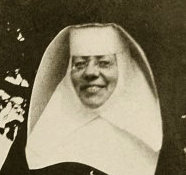St Katharine Drexel Nun and foundress March.3
St Katharine Drexel
Nun and foundress Nun and foundress. Katharine Drexel was the daughter of a millionaire banker. Born in Philadelphia in 1858, she had an excellent education and travelled widely. Her unusual family had their own railway car and were used to every luxury. But her mother also opened the door of their home to the poor three days each week and her father spent half an hour each evening in prayer.
As a young woman Katherine nursed her stepmother through a three-year terminal illness. This made her realise that all the Drexel money could not buy safety from pain or death. It was around this time her life took a profound turn.
Katherine had always been interested in the plight of the Native American Indians, having been appalled by reading Helen Hunt Jackson's A Century of Dishonor. While on a European tour, she met Pope Leo XIII and asked him to send more missionaries to Wyoming for her friend Bishop James O'Connor. The Pope replied: "Why don't you become a missionary?" His answer shocked her into considering new possibilities.
Back home, she visited the Dakotas, met the Sioux leader Red Cloud and began her systematic aid to Indian missions.
She could easily have married. But after much discussion with Bishop O'Connor, she wrote in 1889: "The feast of St Joseph brought me the grace to give the remainder of my life to the Indians and the Colored." Newspaper headlines declared: "Heiress gives Up Seven Million!"
After three and a half years of training, she and her first band of nuns (Sisters of the Blessed Sacrament for Indians and Colored) opened a boarding school in Santa Fe. A string of foundations followed. By 1942 she had a system of black Catholic schools in 13 states, plus 40 mission centers and 23 rural schools. Segregationists harassed her work, even burning a school in Pennsylvania. In all, she established 50 missions for Indians in 16 states.
Two saints met when she was advised by Mother Cabrini about the 'politics' of getting her Order's Rule approved in Rome. Her crowning achievement was the founding of Xavier University in New Orleans, the first university in the United States for blacks.
At 77, she suffered a heart attack and was forced to retire. Apparently her life was over. But now came almost 20 years of quiet prayer from a small room overlooking the sanctuary. Small notebooks and slips of paper record her various prayers, ceaseless aspirations and meditation. She died at 96 and was canonized by Pope John Paul II in 2000.
As a young woman Katherine nursed her stepmother through a three-year terminal illness. This made her realise that all the Drexel money could not buy safety from pain or death. It was around this time her life took a profound turn.
Katherine had always been interested in the plight of the Native American Indians, having been appalled by reading Helen Hunt Jackson's A Century of Dishonor. While on a European tour, she met Pope Leo XIII and asked him to send more missionaries to Wyoming for her friend Bishop James O'Connor. The Pope replied: "Why don't you become a missionary?" His answer shocked her into considering new possibilities.
Back home, she visited the Dakotas, met the Sioux leader Red Cloud and began her systematic aid to Indian missions.
She could easily have married. But after much discussion with Bishop O'Connor, she wrote in 1889: "The feast of St Joseph brought me the grace to give the remainder of my life to the Indians and the Colored." Newspaper headlines declared: "Heiress gives Up Seven Million!"
After three and a half years of training, she and her first band of nuns (Sisters of the Blessed Sacrament for Indians and Colored) opened a boarding school in Santa Fe. A string of foundations followed. By 1942 she had a system of black Catholic schools in 13 states, plus 40 mission centers and 23 rural schools. Segregationists harassed her work, even burning a school in Pennsylvania. In all, she established 50 missions for Indians in 16 states.
Two saints met when she was advised by Mother Cabrini about the 'politics' of getting her Order's Rule approved in Rome. Her crowning achievement was the founding of Xavier University in New Orleans, the first university in the United States for blacks.
At 77, she suffered a heart attack and was forced to retire. Apparently her life was over. But now came almost 20 years of quiet prayer from a small room overlooking the sanctuary. Small notebooks and slips of paper record her various prayers, ceaseless aspirations and meditation. She died at 96 and was canonized by Pope John Paul II in 2000.


Comments